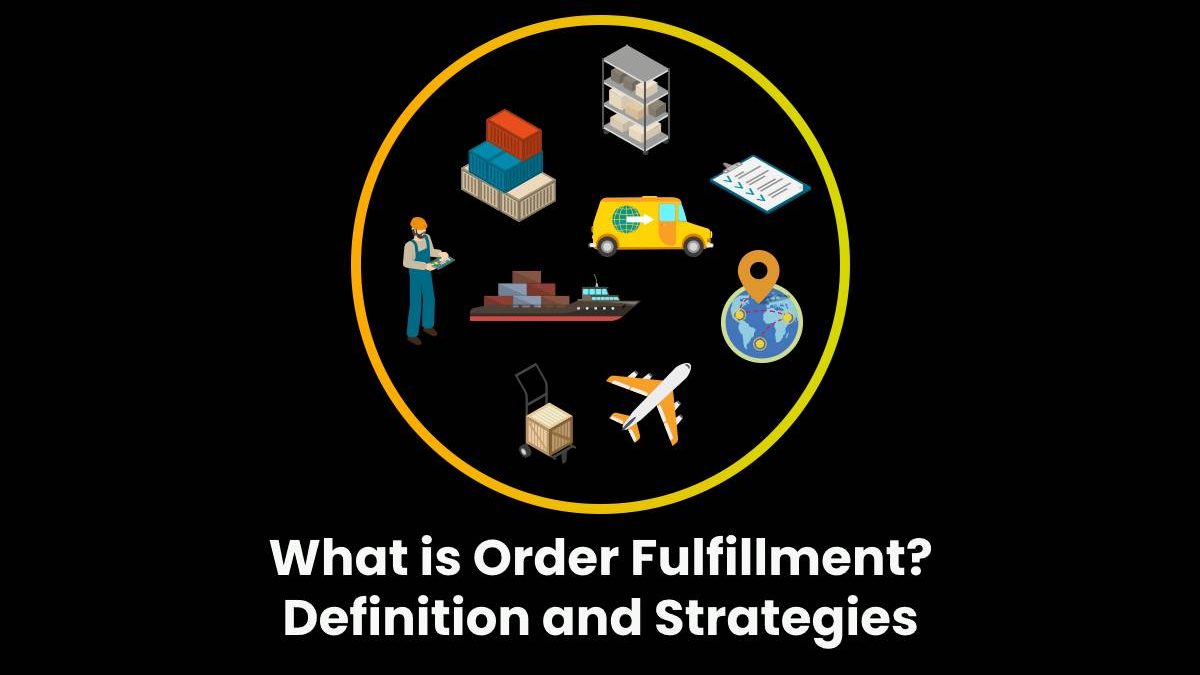What is Order Fulfillment? Definition and Strategies
38% of customers will likely never shop from a retailer again after a poor delivery experience.
What does this mean? While selling products should be a top priority for your retail business, how they end up in your customers’ hands is just as important.
To prevent damaging your business’ reputation, missing out on a good chunk of your clientele and losing money, you should have a streamlined order fulfillment process in place.
In this article, we’ll look at the order fulfillment process and the different order fulfillment types you can integrate into your business.
Table of Contents
What is Order Fulfillment?
Order fulfillment is the process of receiving items and delivering them to your customers within an estimated period from start to finish.
This process covers the following five steps:
- Receiving inventory
- Storing products
- Order picking
- Order packing
- Product shipping
- Handling returns
First in the order fulfillment process is receiving your inventory.
While this is the stage where you receive goods from your supplier, it is also where you should inspect and count your inventory’s quantity and quality.
Next, you’ll need to store and organize these products in your warehouse. Managing your stock is essential as it can influence the speed and efficiency of the entire process.
That said, you should keep an eye out on what products come and go and organize them accordingly to minimize the risk of shipping delays.
Once an order is placed, operators should be able to immediately retrieve the correct items from a designated area in your warehouse. This step can make or break your order fulfillment process since picking incorrect or damaged orders can result in an overall bad customer experience.
Once the orders are sent to the packing station, make sure to inspect for any damages before moving further. Note that if you’ve decided to outsource your order fulfillment, you can skip this step.
Before you pack the orders and ship them to your customers, take into account that some customers may want to return the products for various reasons. While this may not always happen, handling returns effectively is crucial for a great customer experience.
Make sure to create a clear returns policy that is accessible to both your customers and staff to provide specific details on how this process should be managed.
Earlier, we briefly mentioned outsourcing. That’s because there are multiple ways you can conduct the order fulfillment process.
As Modula puts it, there are four fulfillment models: in-house, dropshipping, outsourced, and hybrid order fulfillment.
Let’s discuss these in further detail.
Types of Order Fulfillment
1. In-House
As the name suggests, you are fully responsible for handling the order fulfillment steps mentioned above with in-house fulfillment.
One advantage is that you have full control over your stock, meaning that you’ll quickly be able to address and fix any issues that may happen down the road. Moreover, this is a cost-effective option since you handle all of the tasks yourself and you’ll only need to pay for shipping fees.
On the other hand, in-house order fulfillment can be time-consuming since you’ll need to pick, pack and monitor the shipment of your products.
2. Dropshipping
With dropshipping, you rely on a third-party supplier to manage your inventory, which means you aren’t required to have any inventory in stock.
In other words, this is the most hands-off and affordable option you can go about with managing the order fulfillment process.
Once an order is placed, your supplier is responsible for handling the order and shipping it to the customer.
Since you hardly have any control of the fulfillment process, you may risk working with suppliers that offer poor services, which can negatively impact your brand’s reputation.
3. Outsourcing
With outsourced order fulfillment, you hand over the job of managing the order fulfillment process to a third-party logistics (3PL) company.
In contrast to dropshipping, outsourcing allows you to handle your inventory through your 3PL services company.
Consequently, it offers you more control over your inventory and other fulfillment details.
If your business has limited storage space or personnel, outsourcing is a good option, but it comes at a cost since you’ll be charged fees for quality inspections, storage, packaging, shipping, and more.
4. Hybrid Order Fulfillment
Hybrid order fulfillment is a mix of handling in-house fulfillment, dropshipping or working with a 3PL.
For instance, companies may resort to dropshipping products that do not sell as frequently as others, allowing them to optimize storage space. On the other hand, companies may choose to handle local shipments in-house and allow a third-party logistics company to manage their international shipments.
Ultimately, the hybrid fulfillment model is a suitable option for companies that experience rapid growth or have a wide array of products.
The flexibility that hybrid order fulfillment offers could be tempting, but managing inventory can get tricky in the long run since you’ll need to monitor multiple fulfillment operations.

